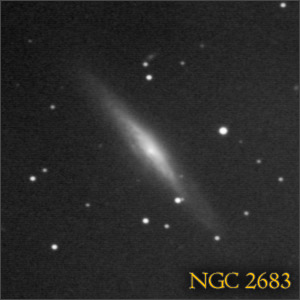March is the beginning of galaxy season!
In its trek around the sun the Earth's nightside sometimes faces the disk of our galaxy. When that happens we see the band of the Milky Way high above us. But as the Milky Way dips towards the horizon, we see what lies beyond our little metropolis of stars—and that means galaxies of all kinds.
The Milky Way still covers much of the night sky in March, so my list of favorite objects for the month only includes nine galaxies. It is just an appetizer for a full galaxy course that will happen in April and May. Bon appetit!
Beginner Galaxies
Two of the most beautiful galaxies in the sky begin their appearence in March. M81 and M82 are perfect objects for beginners. M81 is bright enough to be captured at almost any skill level. M82 is a bit harder, but well worth attempting. If you have a small enough telescope (or a large format camera) try to capture both galaxies in the same frame.
Intermediate Galaxies
NGC 2903 is bright (at least as galaxies go) and it is just bad luck that Messier missed it when compiling his catalog. You will need a lot of exposure time to bring out its wispy arms. NGC 2683 is a beautiful edge-on galaxy in Lynx. But my favorite in this group is probably NGC 2841 which has such tight arms that they almost look like grooves on a record. Resolution is key for bringing out the detail in this spiral.



Advanced Galaxies
NGC 2613 is the easiest of the "advanced" galaxies. It is bright enough and large enough to be a little more forgiving than the others. An 8" or larger telescope should be sufficient. Nevertheless, you will want a lot of exposure time and precise tracking.
With sufficient aperture and careful tracking you should be able to capture some of the more challenging galaxies on this list. NGC 2775 (also known as Caldwell 48) is a smaller version of NGC 2841 while NGC 2654 is a smaller version of NGC 2683.
Arp 245 consists of two interacting galaxies (NGC 2292 & 2993). You will need a great deal of resolution and exposure time to adequately bring out the faint trails connecting the two galaxies. The results are worth it.




